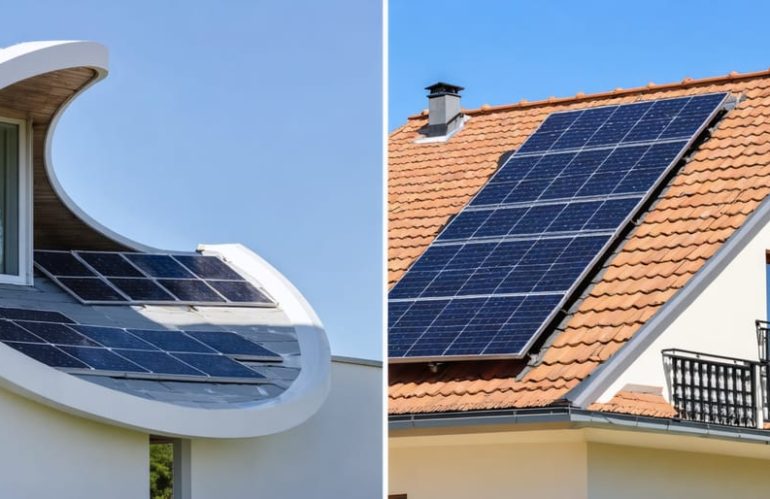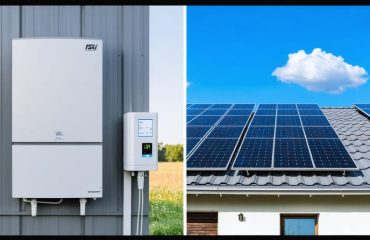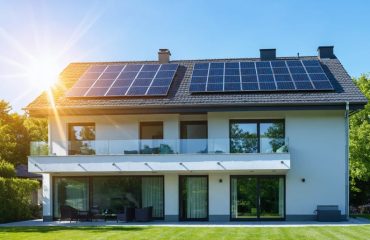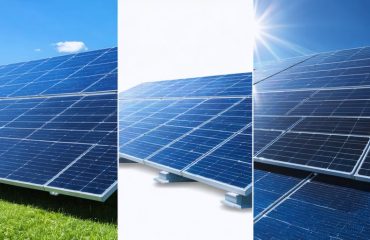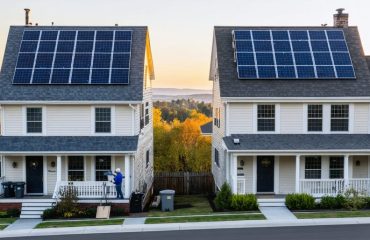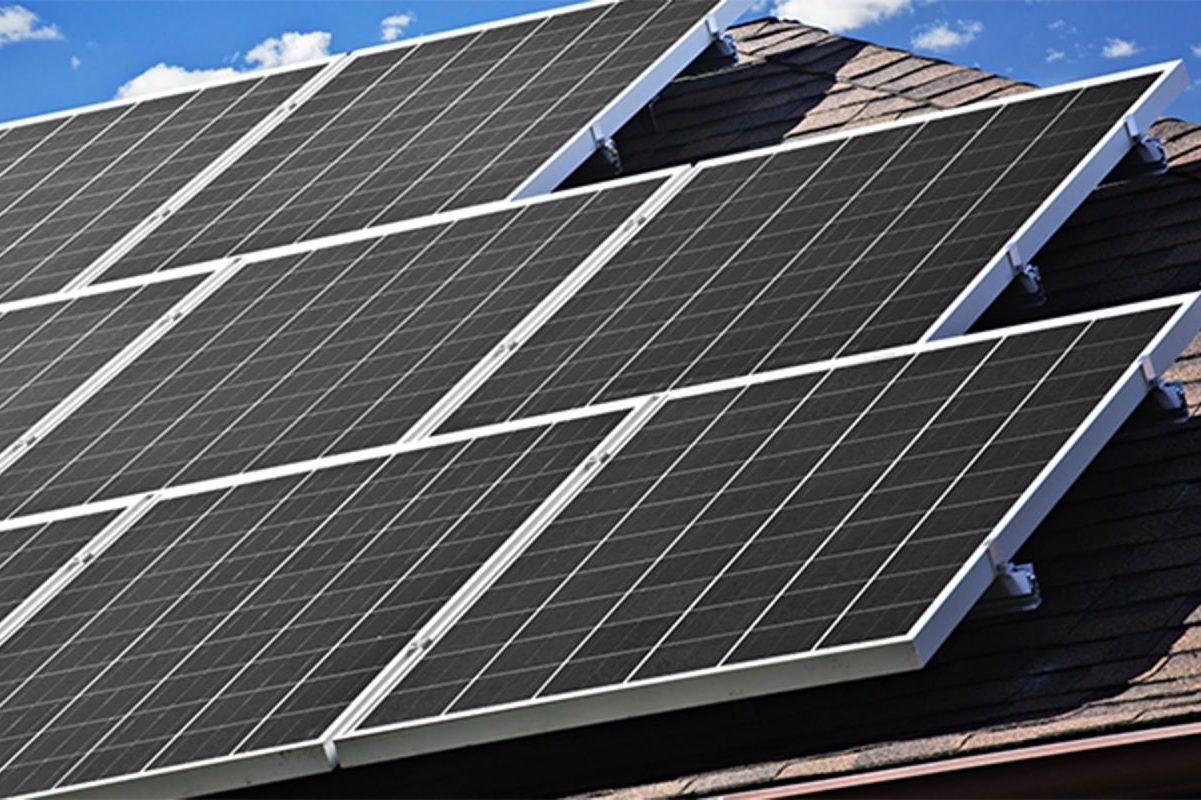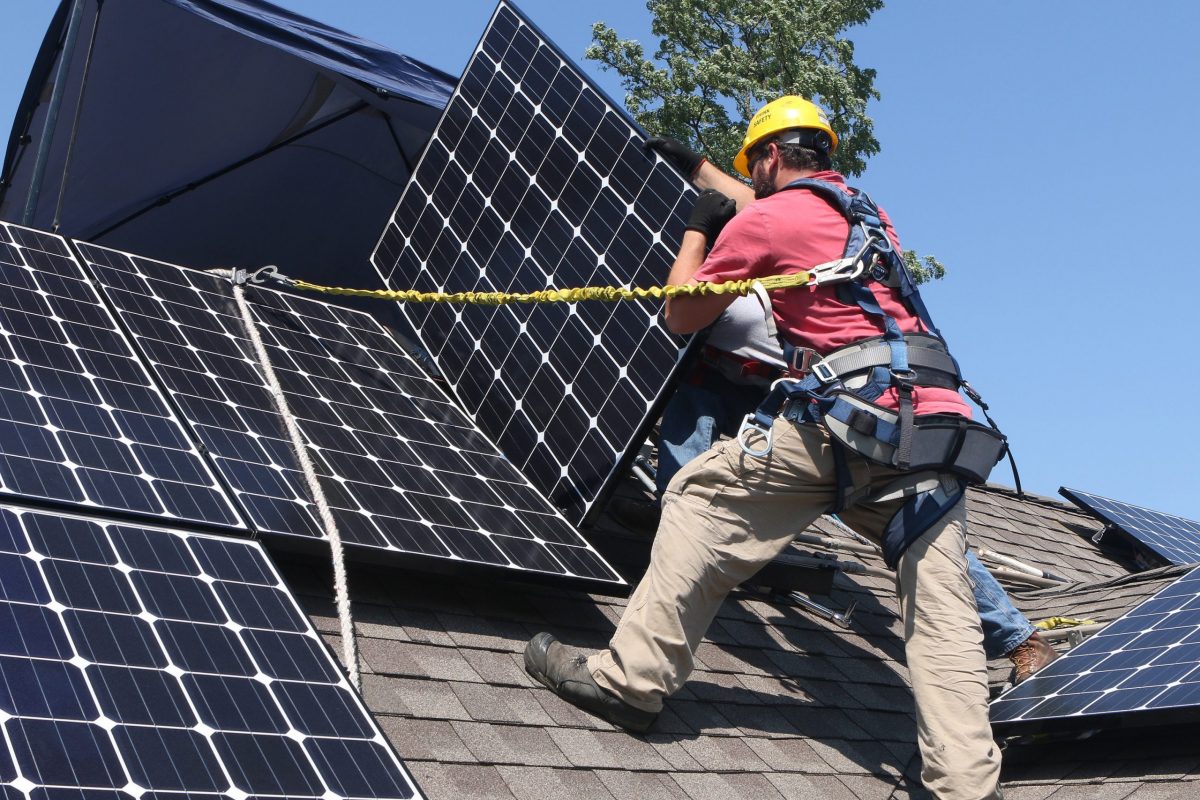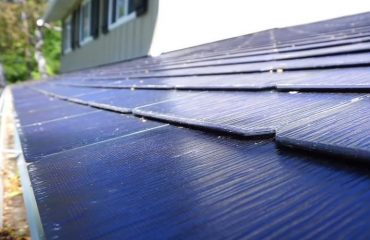The choice between flexible and rigid solar panels represents a crucial decision that directly impacts your home’s energy future. With modern solar panel capabilities advancing rapidly, both options offer distinct advantages for different situations. Flexible panels excel in their adaptability, weighing significantly less and conforming to curved surfaces, making them ideal for boats, RVs, and uniquely-shaped roofs. Traditional rigid panels, while less versatile in placement, typically deliver higher efficiency and longer lifespan, proving more suitable for standard residential installations. This practical comparison will help you navigate the key differences, installation requirements, and cost considerations between these two technologies, ensuring you make an informed decision that aligns with your specific energy needs and property characteristics.
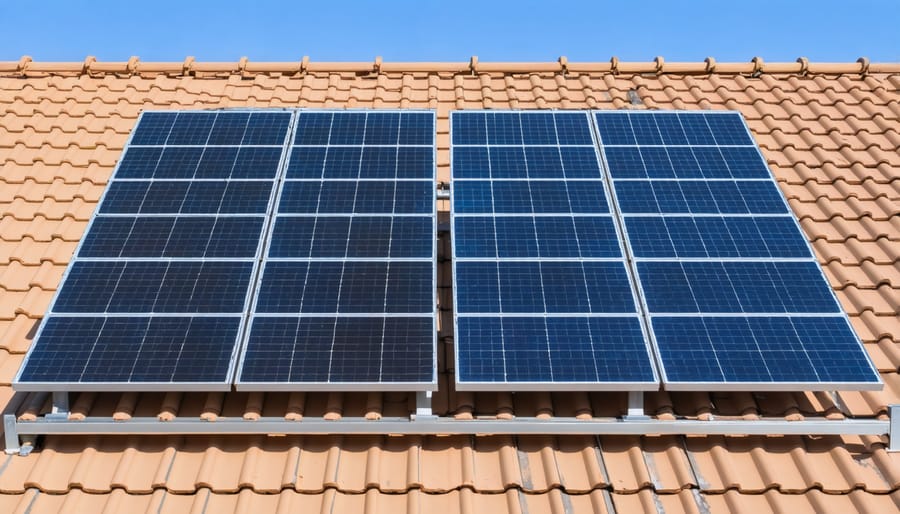
Understanding Flexible Solar Panels
Key Benefits of Flexible Panels
Flexible solar panels offer several compelling advantages that make them an attractive option for many homeowners. Their lightweight design stands out as a primary benefit, typically weighing 70-80% less than traditional rigid panels. This makes them ideal for installations where weight restrictions are a concern, such as on RV roofs or boats.
The versatility of flexible panels is another significant advantage. Their thin, bendable structure allows them to conform to curved surfaces and irregular shapes, opening up installation possibilities that wouldn’t be feasible with rigid panels. You can install them on rounded roof sections, vehicle surfaces, or even incorporate them into portable solar solutions.
Durability is also a key strength, particularly in challenging weather conditions. These panels can withstand strong winds better than their rigid counterparts, thanks to their low profile and ability to flex. They’re also typically more resistant to impact damage, making them suitable for areas prone to hail or falling debris.
Installation is generally simpler and more cost-effective, as flexible panels often use adhesive backing rather than requiring complex mounting systems. This can significantly reduce both installation time and additional hardware costs.
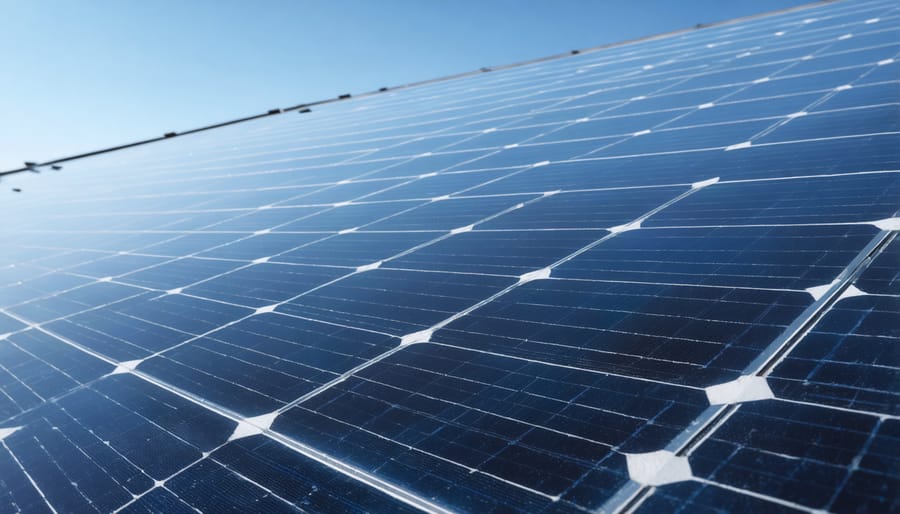
Potential Drawbacks
While flexible solar panels offer many advantages, they do come with some important considerations. Their efficiency typically ranges from 15-18%, which is lower than rigid panels that can achieve 20-23% efficiency. This means you’ll need more flexible panels to generate the same amount of power as traditional rigid panels.
Durability can also be a concern, as flexible panels generally have shorter lifespans, typically lasting 15-20 years compared to the 25-30 years of rigid panels. The flexible nature that makes them versatile also makes them more susceptible to environmental stress and potential damage over time.
Cost is another factor to consider. While the initial purchase price might be lower, the reduced efficiency and shorter lifespan mean you might need to replace them sooner, potentially increasing long-term costs. Additionally, some manufacturers offer limited warranties for flexible panels compared to their rigid counterparts.
Heat management can be challenging with flexible panels, especially when mounted directly on surfaces without air circulation, which may affect their performance and longevity. They also tend to have fewer options for mounting systems and may require professional installation despite their seemingly simple design.
Traditional Rigid Solar Panels
Advantages of Rigid Panels
Rigid solar panels have established themselves as the industry standard for good reason. Their robust construction and proven track record make them a reliable choice for homeowners seeking long-term energy solutions. One of their primary advantages lies in their superior solar panel efficiency factors, typically converting 15-20% of sunlight into electricity compared to flexible panels’ 11-13%.
The durability of rigid panels translates into longer warranties, often 25 years or more, providing homeowners with peace of mind and better return on investment. Their solid construction also means better heat dissipation, which helps maintain efficiency even during hot summer months.
From a financial perspective, rigid panels often prove more cost-effective in the long run. While their initial installation cost might be higher, their superior durability and efficiency mean you’ll generate more power over time, potentially saving thousands on electricity bills. They’re also easier to maintain and clean, requiring minimal upkeep to maintain optimal performance.
Additionally, rigid panels’ widespread use means installers are more experienced with them, potentially leading to fewer installation issues and better overall system performance.
Limitations to Consider
While both flexible and rigid solar panels offer unique advantages, it’s important to understand their limitations before making a decision. Flexible panels, though versatile, typically have a shorter lifespan of 15-20 years compared to rigid panels’ 25-30 years. They also tend to be less efficient, converting about 15-16% of sunlight into electricity versus 18-22% for rigid panels.
Installation requirements vary significantly between the two types. Flexible panels need a smooth, continuous surface for proper adhesion, and not all roof materials are suitable. They can also be more challenging to repair or replace if damaged, as they’re often adhered directly to the surface.
Weight restrictions play a crucial role in the decision-making process. While flexible panels excel in lightweight applications, their reduced durability means they might need replacement sooner. Rigid panels, though heavier, offer better structural integrity but may require additional roof reinforcement in some cases.
Temperature sensitivity is another consideration, as flexible panels can be more affected by heat, potentially reducing their efficiency during hot summer months.
Making the Right Choice for Your Home
Roof Structure Considerations
Your roof’s characteristics play a crucial role in determining which type of solar panels will work best for your home. Flexible solar panels are ideal for curved or uneven surfaces, making them perfect for metal roofs, RVs, and unique architectural designs. They add minimal weight to your roof structure, typically weighing 70-80% less than rigid panels, which can be a significant advantage for older homes or buildings with weight restrictions.
Rigid panels, while heavier, are better suited for traditional pitched roofs with standard shingles or tiles. They require more robust mounting systems but offer better durability against extreme weather conditions. Before making your choice, consider having a professional roof inspection to assess your roof’s condition, load-bearing capacity, and remaining lifespan.
The angle of your roof also matters – rigid panels can be installed with adjustable mounting systems to optimize their angle for maximum sun exposure, while flexible panels generally follow your roof’s existing contours. If your roof needs repairs or replacement within the next few years, it’s wise to complete that work before installing any type of solar panel system.
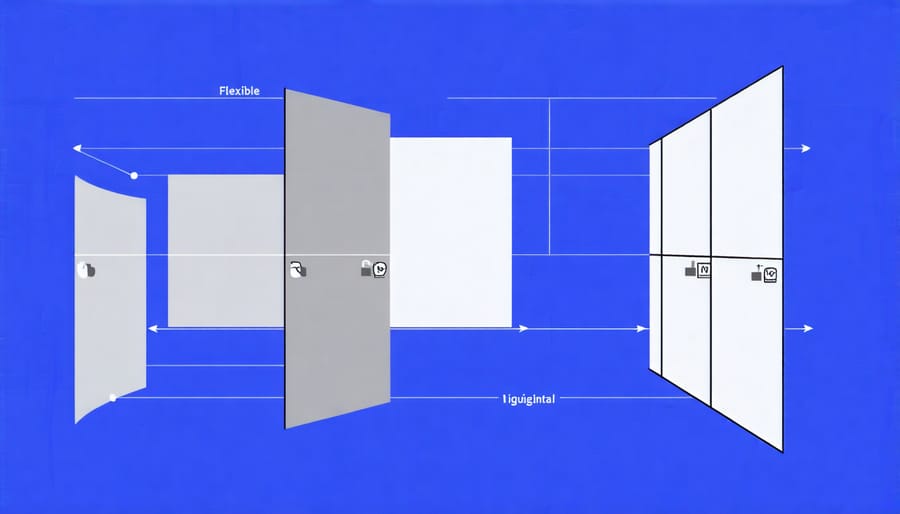
Budget and Energy Goals
When planning your solar installation, budget considerations and energy goals play crucial roles in choosing between flexible and rigid panels. While solar panel installation costs typically run higher for rigid panels, they often deliver better long-term value through higher efficiency and durability. Flexible panels generally cost less upfront but may need replacement sooner.
Your energy production needs should guide this decision. If you’re aiming to power your entire home, rigid panels’ higher efficiency makes them the better choice, despite the higher initial investment. They typically convert 15-22% of sunlight into electricity, compared to flexible panels’ 10-15% efficiency.
However, flexible panels might be the more cost-effective solution for smaller energy needs, like powering an RV or supplementing your home’s existing power supply. They’re particularly appealing if you’re working with a limited budget or need a temporary solution.
Consider your long-term goals: Are you looking to maximize energy independence, or do you need a quick, affordable solution for modest power needs? Your answer will help determine which option delivers the best value for your situation.
Choosing between flexible and rigid solar panels ultimately depends on your specific needs, installation location, and energy goals. Rigid panels remain the go-to choice for traditional rooftop installations, offering maximum efficiency and proven long-term durability. They’re ideal if you have adequate roof space and want to maximize your energy production and return on investment.
Flexible solar panels, on the other hand, open up new possibilities for solar power in situations where rigid panels aren’t practical. Their lightweight nature and adaptability make them perfect for curved surfaces, mobile applications, and structures that can’t support heavy installations. While they may offer lower efficiency, their versatility can make them the better choice in specific scenarios.
Consider these key factors when making your decision:
– Available installation space and surface type
– Required energy output
– Budget constraints
– Installation location and weather conditions
– Long-term maintenance expectations
Remember that solar technology continues to evolve, with both flexible and rigid panels becoming more efficient and affordable each year. Whether you choose flexible or rigid panels, you’re taking an important step toward sustainable energy independence and reduced energy costs. Consider consulting with local solar installers who can evaluate your specific situation and help you make the best choice for your needs. They can provide customized recommendations based on your location, energy requirements, and installation constraints.

